|
Relatorio_de_analise
dos_primeiros_11_volumes_Page1a |
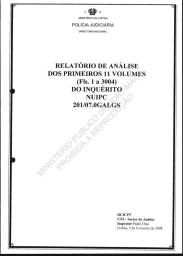 |
|
Relatorio_de_analise
dos_primeiros_11_volumes_Page1b |
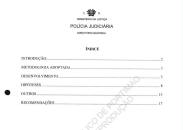 |
|
Relatorio_de_analise
dos_primeiros_11_volumes_Page1c |
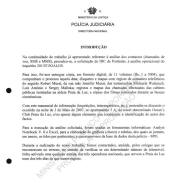 |
|
Relatorio_de_analise
dos_primeiros_11_volumes_Page1d |
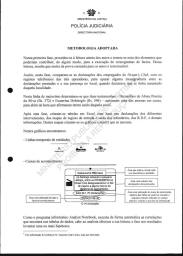 |
|
Relatorio_de_analise
dos_primeiros_11_volumes_Page1e |
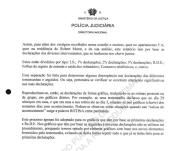 |
|
Relatorio_de_analise
dos_primeiros_11_volumes_Page1f |
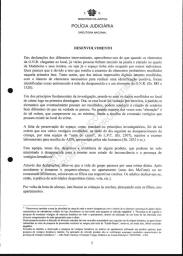 |
|
Relatorio_de_analise
dos_primeiros_11_volumes_Page1g |
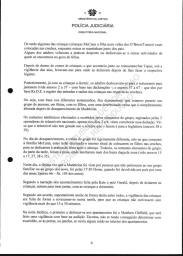 |
|
Relatorio_de_analise
dos_primeiros_11_volumes_Page1h |
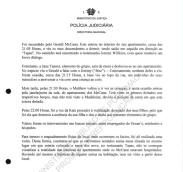 |
|
Relatorio_de_analise
dos_primeiros_11_volumes_Page1i |
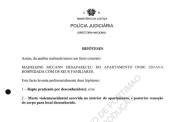 |
|
Relatorio_de_analise
dos_primeiros_11_volumes_Page1j |
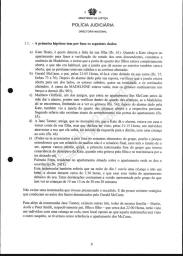 |
|
Relatorio_de_analise
dos_primeiros_11_volumes_Page1k |
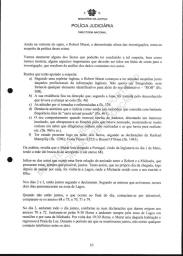 |
|
Relatorio_de_analise
dos_primeiros_11_volumes_Page1l |
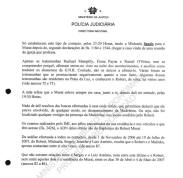 |
|
Relatorio_de_analise
dos_primeiros_11_volumes_Page1m |
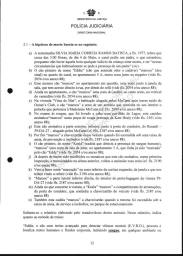 |
|
Relatorio_de_analise
dos_primeiros_11_volumes_Page1n |
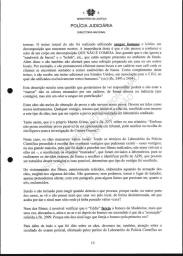 |
|
Relatorio_de_analise
dos_primeiros_11_volumes_Page1o |
 |
|
Relatorio_de_analise
dos_primeiros_11_volumes_Page1p |
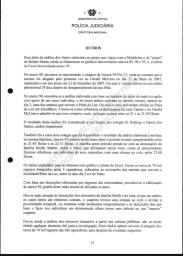 |
|
Relatorio_de_analise
dos_primeiros_11_volumes_Page1q |
 |
|
Relatorio_de_analise
dos_primeiros_11_volumes_Page1r |
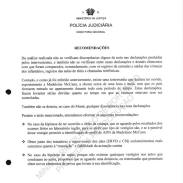 |
|
Relatorio_de_analise
dos_primeiros_11_volumes_Page1s |
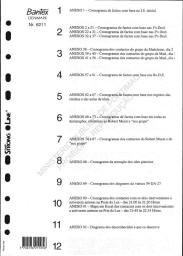 |
|
Anexo01 to Anexo92 |
|
OUTROS APENSOS 11
VOLUMES IMAGES |
NOTE:
This is the second report demanded
to a team of independent analysts
from the Central Department of
Criminal Investigation (Central
Division of Information Analysis -
PJ), dated from February 2008.
The references to the annexes and
pages of the files were kept, just
in order to allow anyone to ask for
some particular document(s) to be
translated ' I would do them ALL if
I had the time, but I fear I won't
be able to, so I'll be happy to go
over those that you consider more
interesting, if the request is
rationally founded.
ANALYSIS REPORT OF THE FIRST 11
VOLUMES OF THE INQUIRY (pages
1-3004) Central Department of
Criminal Investigation,
February, 5th, 2008
INTRODUCTION
In the continuity of the work
already developed in reference to
the analysis of the communications
(voice phone calls, SMS and MMS), we
proceeded, by solicitation of the
DIC of Portim', to the operational
analysis of the Inquiry
201/07.0GALGS.
For that matter, we were delivered a
copy, on digital format, of the 11
volumes (pages 1 to 3004), that
constituted the process at that
time; discs and maps with the
registration of the phone contacts
of the arguido Robert Murat, his
mother Jennifer Murat, the witnesses
Michaela Walazuch, Luis Antonio and
Sergey Malinka; registrations and
maps of the calls made from public
booths in Praia da Luz; copies of
the videos made during the
cynotechnic searches.
With this amount of information
(interviews, inquests, etc.), we
pretended to clarify what had
happened on the night of May the
3rd, 2007, in the apartment 5A, of
the resort named Praia da Luz Ocean
Club, and to find any element that
could lead to the identification of
the author of the facts.
To realize the requested analysis,
it was used the informatics tools:
Analyst Notebook V.6 and Excel, for
the realization of the Graphs
(charts) and tables, of which we
annex those considered pertinent;
and we used the database of this
police ' SPO.
Throughout our work we were
frequently contacted by colleagues
that were on the field, in the
attempt to verify if a certain
mobile phone number had activated
any antenna, of the 3 national
operators, that serve Praia da Luz
on any of the 3 days that we have
registers for.
METHODOLOGY
In the first phase, we proceeded to
a careful reading of the files
taking notes of the elements that
could contribute, in any way, to the
composition of the chronograms of
the facts. From that reading is
clear that much of the proof is
testimonial.
So, at this phase, we compared the
declarations of the Ocean Club's
employees with the phone registries
of the 3 operators, to figure out if
there is any incongruence between
the depositions made and their
presence at the place, when they
claimed that they were absent from
that locality.
Following this line of reasoning it
was determined that two witnesses '
Bernardino (page. 372) and Ecaterina
(pag 596) ' activated one of the
antennas, beyond the time that they
stated having left that area.
After this phase, Excel tables were
created based on the depositions of
the different intervenients, the
maps with the registry of the
entrance and exits of the creches,
the R.D.E. and other information.
From these maps charts were created
(in annex).
On these charts we find:
- Timelines of entities
- Boxes of events
[Note: figures are not exhibited
here for difficulties with edition]
As the Analyst Notebook executes
automatically the correlations that
it finds on the tables with the
data, it's up to the analyst to read
it, and according with the results,
to enunciate one or more hypothesis.
So, apart from the traces recovered
on that occasion and on others, both
from the apartment 5A, as from the
residence of Robert Murat, and from
its analysis, this report is based
on the statements of the several
intervenients that are translated on
the annexed charts.
These are separated by the following
types: first declarations; second
declarations; third declarations;
R.D.E.; Registry pages from the creches; telephone contacts; and
others.
This categorization was made in
order to find any discrepancy on the
depositions of the different
witnesses and arguidos. That is, we
aimed to check if there were
significant changes in their
statements.
The statements were then reproduced
on a graphic form, being the
personal or group routines
represented on daily graphs. For
instance, if a witness declared that
on the 29th had lunch at home, and
that was their routine until the
3rd, that event will appear on the
graphs for those days. Those
situations can be observed when on
the 'event's boxes' the word ROUTINE
appears.
This procedure was adopted for the
graphs based on the first
depositions and Rs.D.E. The graphs
for the second and second statements
this method was not used, because we
chose to make graphs for the new
elements supplied by the witnesses,
avoiding, this way, to repeat
everything that had been done for
the first depositions.
DEVELOPMENT
From the declarations of the various
intervenients, it was clear that
when the GNR arrived at the place,
several persons had already handled
the window and entered the room of
Madeleine and her siblings, which
means that the space had been
occupied by other individuals. It
possibly explains the scarcity of
probational elements recovered on
the first phase. It's a fact that
the only latent fingerprints
recovered, with the necessary
elements for a positive
identification belonged to the
mother of the missing child and to a
member of the GNR (pag. 885 and
1520).
One of the fundamental principles of
the investigation is connected with
the data recovered on the crime
scene since the first moment. If
that place had already been visited
by third parties, the elements that
eventually could be recovered, may
lead to the construction of
scenarios quite different from what
really happened. Most of the times
that 'change' is such that it
compromises, or at least, limits the
recovery of eventual traces that
might exist on the crime scene.
The lack of the preservation of the
space, as the investigation
principles demand, was such that on
the several vestiges recovered, on
the afternoon of the day after the
disappearance of the child, by a SCI
team of the Scientific Police
Laboratory (page. 2307), after
laboratory analysis for the
identification of DNA, it was
revealed the presence of non-human
hair (pages. 2432, passim).
This team searched for any substance
that could have been administered to
the missing child in order to keep
her under an unconscious state
and/or the presence of blood traces.
According to the statements, the
life of the group followed a daily
routine. After having breakfast, at
the apartment (in the case of the
Mccann) or at the Millennium
restaurant, they placed the children
at their respective creches. Then
the adults went for several sports'
activities (tennis, sailing, etc).
Around lunch time, they went for the
kids at the creche and had lunch
with them at the apartments.
In the afternoon some of the
children (McCann children and the
eldest of O'Brien/Tanner) were
placed at the creches, while the
others were kept with the parents.
Some adults returned to their
sports' activities while others went
for other activities, normal for
people on holidays.
After feeding the children, which
happened close to the Tapas
bar/restaurant, under the
supervision of the nannies, they
took them to put them to bed after
making their hygiene.
Afterwards, with the children
already asleep, the adults went to
the restaurant for dinner (annexes 2
to 37, based on the statements; and
annexes 57 to 67, based on the
Rs.D.E. and crêche's registration).
Based on the several testimonies,
it's demonstrated that we are in the
presence of a group of people, in
holidays, with children, with a
certain routine that is completely
changed after the disappearance of
Madeleine.
The mobile phone contacts, made and
received by the elements of the
group, registered by the 3 national
operators, only corroborate that
deduction for the days 2 to 4. It's
clear that the mobile phones did not
have much use and when they use it
it's to call UK (annexes 38, 39).
On the day of the disappearance, the
group routine was slightly
different, not for the McCann
family, they had the same ritual of
placing the children on the creche
to dedicate to the tennis practice
in the after lunch.
However, the remaining elements of
the group, in the afternoon, went to
the beach, where they had high tea
at the bars in that area (annexes
15, 16, 17, 27, 38 and 35).
On this last day, the last time that
Madeleine was seen by someone not
belonging to the family group or the
friends' group, was at 17:30h, when
she was returned to the parents by
one of the nannies (annex 66, pag
105).
According to the narrative made by
Kate and Gerald, after putting the
children in bed, they got out for
dinner, with the children asleep.
According to an agreement, accepted
tacitly by everyone, the supervision
of the children was made in a way
where they took turns on that task,
so the children would not be
unsupervised for periods longer than
15 to 30 minutes.
On that fateful night, the first one
to go to the apartments was Mathew
Oldfield, who made their check based
on audition. He listened, and it was
not possible to find out if at the
windows or at the doors, if any
noise was coming from the inside of
the apartments.
He was followed by Gerald McCann.
This one entered into his apartment,
at about 21:05 h, and aw his
children asleep, he got out and
followed towards the Tapas. In the
way he met the witness Jeremy
Wilkins, with whom he maintained a
small conversation.
Meanwhile, Jane Tanner, another
element of the group, left the table
and went to her apartment. On the
way she saw Gerald talking to Jeremy
('Jezz') ' Amazingly, none of them
saw her. On that occasion, at about
21:15h, Jane saw at the top of the
street, a male individual crossing
the road, holding a child.
Later, around 21:30h, Mathew went
back to check the children, and on
that occasion he entered through the
window/door of the living room, in
the apartment of the McCann. He saw
the twins sleeping in their cots,
but he didn't see Madeleine, due to
the position of the bed where she
was sleeping.
By 22:00h, it was Kate's turn to
proceed to the verification of how
her children were, and that's why it
was her that noticed the absence of
her daughter and gave the alert to
the other members of the group.
There were several intervenients on
the initial searches amongst the
Ocean's employees, residents and
guests.
To get the physical context f the
place where the facts occurred, a
visit was made. This way, it was
evident that when sit at a table
where the one that was used by the
nine, at the Tapas restaurant, it
was impossible to see the totality
of the back of the apartment where
the McCann stayed. It was even
possible that a person entered the
apartment without being seen from
that position.
HYPOTHESES
From the analysis emerges one
concrete FACT:
MADELEINE MCCANN DISAPPEARED FROM
THE APARTMENT WHERE SHE WAS LODGED
WITH HER FAMILY.
This
fact raises 2 preferential
hypotheses:
1- Kidnapping performed by
unknown(s); and/or
2- Violent/accidental death
occurring inside the apartment and
posterior removal of the body to an
unknown place.
1.1.
The first hypothesis is based on the
following data:
a) It was Kate Healy that found out
that her daughter was missing (pag.
61). When Kate arrives at the
apartment to check the children, she
found out that Madeleine was absent
and that her children's bedroom door
was completely open, which was not
usual, and that the window that
gives access to the exterior was
also opened, the shutters opened and
the curtains opened to the sides.
b) Gerald McCann, the father, at
around 21:05h, had seen her on the
bed (pag 37, lines 73-76). After the
alarm given by his wife, he realized
that the window was opened to one of
the sides, the shutters almost
entirely raised up and the curtains
opened to the sides. Madeleine's bed
was empty, but the twins were still
on their cots sleeping (page 901).
c) Mathew Oldfield, one of the
friends that enters the apartment of
the McCann before the mother gives
the alarm, didn't check inside the
room of the children, if Madeleine
was there, only seeing the twins
(page 54); after Kate gave the alarm
he also saw the window of the
children's room opened and it's
shutter raised. As he referred there
was no sign of a breakthrough in the
apartment doors (pag 55).
d) Jane Tanner, a friend, that at
the moment when Kate give the alarm
was at home taking care of her
daughter, but declares to have seen,
at 21:15h, an individual crossing
the street she was going up to, from
the left to the right, holding a
child (pag 46).
e) (It was possible to add the rest
of the elements of the group,
however in our understanding an
analysis report is not a final
report, so we are just going to
mention the first witness outside
the group that became aware of the
despair of Kate, while she cried for
her daughter and reprimanded herself
for having left her alone)
Pamela Fenn, resident at the
apartment just above the one were
the incident occurred (p. 2413).
This witness also referred that on
the night of day 1 (NOTE: by the way
it is written it means May 1st) she
heard a child and not a baby, crying
for about 1:30 h, and that this
sound came from the apartment below
hers. This statement contradicts the
version presented by the group that
they were checking the children
every 15 or 30 minutes.
There are no witnesses that have
watched whatever happened. Also
there are no traces that may lead to
the author of the facts denounced by
Gerald McCann.
Apart from the witness Jane Tanner,
there other 3 witnesses, all of the
same family ' Martin, Aiofe and
Peter Smith, respectively father,
daughter and son ' that around
22:00h, have seen an individual
carrying a child, in a place opposed
to the one where the other witness
claims to have seen the other
suspect, if we use as reference the
McCann apartment.
Still on the kidnapping side, Robert
Murat, at a certain time of the
investigations, became a suspect of
the crime.
Let's enumerate some facts that led
to such a suspicion, and demonstrate
some important aspects that must be
taken into account by the
investigation, that result from data
within the files.
Reasons that led to the suspicion:
a) According to a British
journalist, R. Murat started having
suspicious attitudes close to those
professionals of the British media.
He didn't want to be photographed
and didn't give any identification
element apart from his nick name ' 'ROB' (pag. 308).
b) His residence was in the
direction that, according to Jane,
was taken by the unknown that was
carrying a child (pag.46).
c) The attitudes taken by him and
referred on page 329.
d) Anonymous denounce that suggests
that he was an individual that
frequently viewed sites of 'heavy
sexual contents' (page 461).
e) His behaviour while acting as a
translator, showing an unusual
interest, that surpassed the
functions for which he was
nominated, he showed curiosity about
the diligences that had been
realised and the ones that were to
be performed (pag 960, passim).
f) Having been present on the night
of the facts, according to the
declarations of Rachel Mampilly (pag
1296); Fiona Payne (1323) and
Russell
(page 1945).
From the analysis it results that
Murat arrived in Portugal, coming
from Britain on May the 1st, his
mother went to get him from the
airport (annex 68).
From the acts ('autos') it is
deprehended that a very strong
relationship exists between Robert
and Michaela, and that they try to
be together, whenever it's possible.
On the same day of his arrival,
immediately after passing by his
home, he went to visit her in Lagos,
where Michaela resides with her
husband and daughter.
On the 2nd and 3rd, they declared to
have been together. According to the
antennas they activated, on those
two days, they stayed within the
Lagos area.
When they are not together they
contact by mobile phone, which
occurs at the end of the day,
compare the annexes 68 and 75; and
70, 71 and 79.
On the 3rd, they were together all
day, according to their statements
that originated the annexes 70 to
72.
They met at 9:30h and were around
the Lagos area in meetings and at
Michaela's house. Around 19:30h,
Murat left her place and returned to
Praia da Luz. During the period they
were together there are no phone
contacts between the two.
They only establish that sort of
contact at 23:20h, having Michaela
called Murat after, according to the
statements on pag 1184 and 1544,
arriving home from the church
meeting she frequents.
Only the witnesses Rachael Mampilly,
Fiona Payne and Russell O'Brien,
without we understanding why, state
that they saw him on the night of
the facts, helping as a translator
the members of the GNR. However they
are the only ones to stand that.
Several witnesses denied that fact.
Some of those witnesses are
residents at Praia da Luz and know
Robert, from sight, for several
years (annexes 72 and 73).
The mother refers that Murat stayed
at home all the time, close to her,
after having entered at 19:30h.
Nothing of interest resulted from
the searches realised to his
residence, that allowed to infer
that he was involved, in any way, on
the disappearance of Madeleine. That
is, no traces of the presence of
Madeleine were found on the places
accessed by Robert.
The exams performed by the Medical
Forensic Laboratory to the hair
found at his residence and vehicles
(pag 2426), the DNA recovered was of
the haplotype of Robert Murat.
From the analysis realised to every
communication, since November the
1st, 2006 until July 19th, 2007, of
Robert, Michaela, Sergey, Jennifer
and Luis Antonio, it's evident that
Robert and Malinka only contacted
each other 8 times, annex 87.
There is no relationship between
Sergey and Luis Antonio, and between
this last one and Robert, neither
between those two and the residence
of Robert Murat, between April 30th
and May 4th (annexes 82 to 86).
2.1.
The hypothesis of death is based on
the following:
a) The witness Silvia Batista, page
1977, refers that at 3:00 h, May
4th, the couple asked for a priest,
which she found strange since there
was at that time any indication that
the child was dead, and it is 'under
those circumstances that usually the
presence of a priest is demanded'
(sic).
b) The search dog 'Eddie' (dog that
signals the presence of cadaver
odour) 'marked' (gave a signal) in
the couples bedroom, at the
apartment 5A, on an area close to
the wardrobe (page 2054, and/or annex
88)
c) That same dog 'marked', in the
same apartment, an area close to the
window of the living room, which has
a direct access to the street,
behind the sofa (page. 2054 and/or
annex 88)
d) Still in the apartment, the dog
'marked' an area in the garden, at
the corner, down the vertical from
the veranda (page 2054 and/or annex
88).
e) At the villa 'Vista do Mar', the
house rented by the McCann after
leaving the Ocean Club, the dog
'marked' the area of the closet that
contained in its interior the soft
toy belonging to Madeleine (cf. page.
2099 and/or annex 88)
f) From the exam to the clothing
performed in a pavilion in Lagos,
this same dog 'marked' some pieces
of clothes that belonged to Kate
Healy (page 2101 and /or annex 88)
g) This dog signalled the exterior
and interior parts, of the driver's
door, of the Renault 59-DA-27 '
rented by the McCann (page. 2187 and
/or annex 88)
h) Finally he 'marked' the key/card
of this vehicle when hidden in a
sand box (page 2187 and/or annex 88)
i) The search dog, named 'Keela' (a
she dog that detects the presence of
human blood) 'marked' an area in the
living room, in the apartment 5A,
that had been 'marked' by the dog
'Eddy' (page. 2054 and/or annex 88)
j) After the mosaics that this dog
signalled had been retired, on a
first inspection, and mentioned
previously, she marked that same
area once more (page 2190 and/or
annex 88)
k) She 'marked' also the inferior
side of the left side curtains, of
the window referred above (page 2190
and/or annex 88)
l) She 'marked' the inferior lateral
right side, in the inside of the
booth of the car 59-DA-27 (page 2187
and/or annex 88)
m) In what concerns the vehicle,
'Keela' 'marked' the little
compartment of the driver's door,
that contained the key/card of the
vehicle (page 2187 and/or annex 88)
n) This dog also 'marked' the
key/card when the same was hidden
into a sand box.
It should be noted the report made
by the trainer /owner of these dogs.
On this report it's mentioned the
methodology of training:
'Eddie, the dog with an advanced
training to detect mortal victims
(E.V.R.D.), searches and locates
human remains and body fluids,
including blood, in any environment
or terrain. The initial training of
the dog was done with human blood
and decaying piglets that were born
dead. The importance of this
training is that the dog learnt to
identify the odour of a decaying body
that is not food. This guaranties
that the dog ignores the 'bacon
sandwich' and the 'kebab', etc. that
are always present in the
environment. Besides that the dog
will not alert to a meal prepared at
home or on any other place. For
instance, the dog will be efficient
on searching a cadaver in café where
the clients can be seated eating a
bacon sandwich. As a complement of
this training, the dog receives an
additional training in the USA, in
association with the FBI, in which
will be used exclusively human
remains' (sic) (page 2493 and 2494).
This summarized description raises a
question that we would like to see
answered: could the dog be 'marking'
not the odours emanated from a
cadaver, directly or indirectly (by
contagious), but from blood in
putrefaction'
These dogs are means for obtaining
proof but they cannot be used as
proof. They must be taken as
instruments. Any vestige, even
invisible to the eye, recovered with
the use of these dogs, has to be
subjected to forensic exam on a
credited laboratory.
It is the same Martin Grime that, at
pages 2271, refers on his report:
'Although it cannot constitute proof
admissible to court, it can help on
the recovery of intelligence for the
investigation of serious crimes'.
In this case the dogs signalled
several places. The technicians of
the Scientific Police Laboratory
recovered those vestiges ' vestiges
that that on it's majority were not
visible to the eye ' and sent them
to the laboratories for the
necessary forensic exams, in order
to recover and identify the DNA
profiles, that might be extracted
from them.
From the screening of the videos,
referred previously, done when the
dogs were working, some doubts
arise. We don't want and we can't
take the place of the trainer, we
only wish to alert, with this
paragraph, to some facts, that
according to us, need further
clarification.
If the dog is trained to react when
he detects what he is looking for,
why, in most of the cases, we see
the dog passing more than once by
that place in an uninterested way,
until he finally signals the place
where he had already passed several
times'
On one of the films, it's possible
to see that 'Eddie' sniffs
Madeleine's cuddle cat, more than
once, bites it, throws it into the
air and only after the toy is hidden
does he 'mark' it (page 2099). Whys
didn't he signal it when he sniffs
it on the first time'
Apart from all that was said about
the dogs, we must also take into
attention the results of the
forensic analysis that was performed
by the experts on the Scientific
Police Laboratory on the day
immediately after the facts, and
already mentioned where no vestige of
blood was found.
OTHER
Besides the analysis of the charts
with reference to the group that
travelled with Madeleine and the
'group' of Robert Murat, other
charts were made.
On the annex 89 it's represented the
renting of the vehicle 59-DA-27,
where it's signalled that the same
was rented for the first time by
Gerald McCann on May 27th, 2007, and
kept until September 23rd, 2007.
Which means that the vehicle entered
under his possession 24 days after
the disappearance of his daughter.
On the annex 90, there is a
detailed analysis developed based
on the hypothesis that the author of
the kidnapping acted with the help
of another individual, and that both
activated on the same minute, only
on the 3rd, one of the antennas at
Praia da Luz. This means, they both
would activate cells in Praia da Luz
simultaneously. It was taken as
reference the statements of Jane
Tanner and Gerald McCann and it was
admitted that this contact, short,
had occurred between 21:00 and
21:20h.
The result of this analysis was
communicated, in due time, to the
colleagues, inspectors Rodrigues and
Santos.
It was also to those colleagues that
was transmitted the results of the
analysis made, based on the same
hypothesis (annex 91), but within
the period 21:45h and 22:15h. This
period has to do with the statement
of the Smith family, Martin, Aoife
and Peter, that declare to have seen
a male individual carrying a child
at around 22:00h.
The data analysed to make those
charts and the Excel table, were the
74 thousand registrations supplied
by the 3 operators, with reference
to the activation of the antennas
that serve Praia da Luz between May
2nd and 4th.
Based on the some descriptions made
by the witnesses, other charts are
represented on the annex 92, but
they they do not reveal anything
useful for the investigation.
More attention was given to the
descriptions of the members of the
Smith's family and Jane's, since in
both there was a common element, the
suspect transported a child, and
also due to their temporal
proximity. The rest of them were
scattered in time and the
descriptions were based on the fact
that the individuals at a certain
time had a suspicious attitude or
aspect.
An analysis was also made to the
numbers called from the public phone
booths, but no useful element o the
investigation was found. This data
serve only, just like the 74
thousand registries of the
operators, to eliminate eventual
suspects.
Finally, it may be referred that
from the analysis to the
communications, in general, nothing
relevant could be found.
RECOMMENDATIONS
From the analysis no noticeable
discrepancies can be found from the
depositions made by the
intervenients, and also between
those statements and other elements
to which they were compared,
namely, the registries of the
crêches entrances and exits of the
children, registries of the tennis
classes and phone calls.
However, as referred previously,
there is a witness that declares to
have heard, supposedly Madeleine
McCann, crying for one and a half
hours, without the parents getting
into the apartment during that
period.
This statement raises serious doubts
about for how long the children were
without supervision.
In the case of Murat, there are also
no discrepancies on his statements.
From the mentioned above, we
understand that the following
recommendations must be made:
- On the hypothesis that there was
death of the child, the results
performed by the British Laboratory
must be awaited, in order to assert
what kind of vestiges were collected
and if any of those can lead to the
identification of Madeleine
McCann's DNA profile.
- To obtain, from the trainers and
supervisors of the dogs (ERVD and
CSI), further enlightenings about
the 'marking' and the
friability of
their work.
- Under the hypothesis of abduction,
because there are no vestiges to
lead to the author, we propose the
waiting for a denounce or testimony
that permits to obtain new elements
of proof in order to achieve an
identification.
|